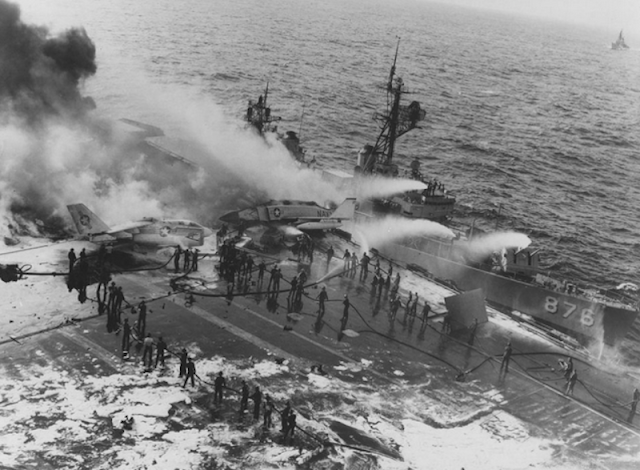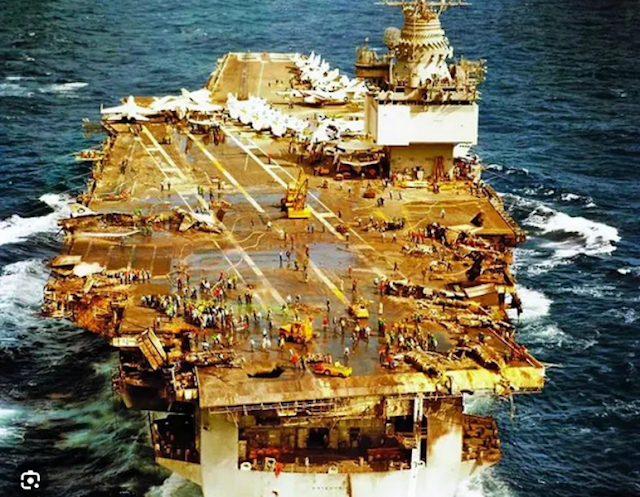On This Date In History
On January 14, 1639, in Hartford,
Connecticut, the first constitution in the American colonies, the
“Fundamental Orders,” is adopted by representatives of Wethersfield,
Windsor, and Hartford.
The Dutch discovered the Connecticut River in
1614, but English Puritans from Massachusetts largely accomplished
European settlement of the region. During the 1630s, they flocked to the
Connecticut valley from the Massachusetts Bay Colony, and in 1638
representatives from the three major Puritan settlements in Connecticut
met to set up a unified government for the new colony.
Roger Ludlow, a
lawyer, wrote much of the Fundamental Orders, and presented a binding
and compact frame of government that put the welfare of the community
above that of individuals. It was also the first written constitution in
the world to declare the modern idea that “the foundation of authority
is in the free consent of the people.” In 1662, the Charter of
Connecticut superseded the Fundamental Orders; though the majority of
the original document’s laws and statutes remained in force until 1818.
On January 14, 1942, President
Franklin D. Roosevelt issues Presidential Proclamation No. 2537,
requiring aliens from World War II-enemy countries, Italy, Germany and
Japan, to register with the United States Department of Justice.
Registered persons were then issued a Certificate of Identification for
Aliens of Enemy Nationality. A follow-up to the Alien Registration Act
of 1940, Proclamation No. 2537 facilitated the beginning of full-scale
internment of Japanese Americans the following month.
While most
Americans expected the U.S. to enter the war, presumably in Europe or
the Philippines, the nation was shocked to hear of Japan’s attack on
Pearl Harbor on December 7, 1941. In the wake of the bombing, the West
Coast appeared particularly vulnerable to another Japanese military
offensive. A large population of Japanese Americans inhabited the
western states and American military analysts feared some would conduct
acts of sabotage on west-coast defense and agricultural industries.
Official
relations between the governments of Japan and the United States had
soured in the 1930s when Japan began its military conquest of Chinese
territory. China, weakened by a civil war between nationalists and
communists, represented an important strategic relationship for both the
U.S. and Japan. Japan desperately needed China’s raw materials in order
to continue its program of modernization. The U.S. needed a democratic
Chinese government to counter both Japanese military expansion in the
Pacific and the spread of communism in Asia. Liberal Japanese resented
American anti-Japanese policies, particularly in California, where
exclusionary laws were passed to prevent Japanese Americans from
competing with U.S. citizens in the agricultural industry. In spite of
these tensions, a 1941 federal report requested by Roosevelt indicated
that more than 90 percent of Japanese Americans were considered loyal
citizens. Nevertheless, under increasing pressure from agricultural
associations, military advisors and influential California politicians,
Roosevelt agreed to begin the necessary steps for possible internment of
the Japanese-American population.
Ostensibly issued in the interest
of national security, Proclamation No. 2537 permitted the arrest,
detention and internment of enemy aliens who violated restricted areas,
such as ports, water treatment plants or even areas prone to brush
fires, for the duration of the war. A month later, a reluctant but
resigned Roosevelt signed the War Department’s blanket Executive Order
9066, which authorized the physical removal of all Japanese Americans
into internment camps.
On January 14, 1969, an explosion aboard the aircraft carrier USS Enterprise kills 27 people in Pearl Harbor, Hawaii. A rocket accidentally detonated, destroying 15 planes and injuring more than 300 people.
The Enterprise was the first-ever nuclear-powered aircraft carrier when it was launched in 1960. It has eight nuclear reactors, six more than all subsequent nuclear carriers. The massive ship is over 1,100 feet long and carries 4,600 crew members.
At 8:19 a.m. on January 14, a MK-32 Zuni rocket that was loaded on an F-4 Phantom jet overheated due to the exhaust from another vehicle. The rocket blew up, setting off a chain reaction of explosions. Fires broke out across the deck of the ship, and when jet fuel flowed into the carrier’s interior, other fires were sparked. Many of the Enterprise’s fire-protection features failed to work properly, but the crew worked heroically and tirelessly to extinguish the fire.
In all, 27 sailors lost their lives and another 314 were seriously injured. Although 15 aircraft (out of the 32 stationed on the Enterprise at the time) were destroyed by the explosions and fire, the Enterprise itself was never threatened.
The USS Enterprise was repaired over several months at Pearl Harbor and returned to action later in the year.
On January 14, 1784, the Continental Congress ratifies the Treaty of Paris, ending the War for Independence.
In the document, which was known as the Second Treaty of Paris because the Treaty of Paris was also the name of the agreement that had ended the Seven Years’ War in 1763, Britain officially agreed to recognize the independence of its 13 former colonies as the new United States of America.
In addition, the treaty settled the boundaries between the United States and what remained of British North America. U.S. fishermen won the right to fish in the Grand Banks, off the Newfoundland coast, and in the Gulf of Saint Lawrence. Both sides agreed to ensure payment to creditors in the other nation of debts incurred during the war and to release all prisoners of war. The United States promised to return land confiscated during the war to its British owners, to stop any further confiscation of British property and to honor the property left by the British army on U.S. shores, including Negroes or slaves. Both countries assumed perpetual rights to access the Mississippi River.
Despite the agreement, many of these issues remained points of contention between the two nations in the post-war years. The British did not abandon their western forts as promised and attempts by British merchants to collect outstanding debts from Americans were unsuccessful as American merchants were unable to collect from their customers, many of whom were struggling farmers.
In Massachusetts, where by 1786 the courts were clogged with foreclosure proceedings, farmers rose in a violent protest known as Shay’s Rebellion, which tested the ability of the new United States to maintain law and order within its borders and instigated serious reconsideration of the Articles of Confederation.



















No comments:
Post a Comment